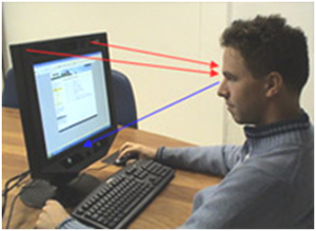
During saccadic activity, we cannot see at all. We perceive the world visually only through fixations. The brain virtually integrates the visual images that we acquire through successive fixation. Eye tracking setups vary greatly; some are ahead-mounted, some require the head to be stable,and some function remotely and automatically track the head during motion. Most use a sampling rate of at least 30Hz. Although 50/60 Hz is most common, today many video-based eyey-tracker run at 240,350 or even 1000/1200Hz ,which is needed in order to capture the details of the very rapid eyemovements during readinds or during studies or neurology. A wide variety of disciplines use eye tracking techniques, including cognitive science, psychology, Marketing research and medical research(neruology diagnosis). specific applications include the tracking eye movement in language reading, music reading and the perception of advertising, the playinng of sport.